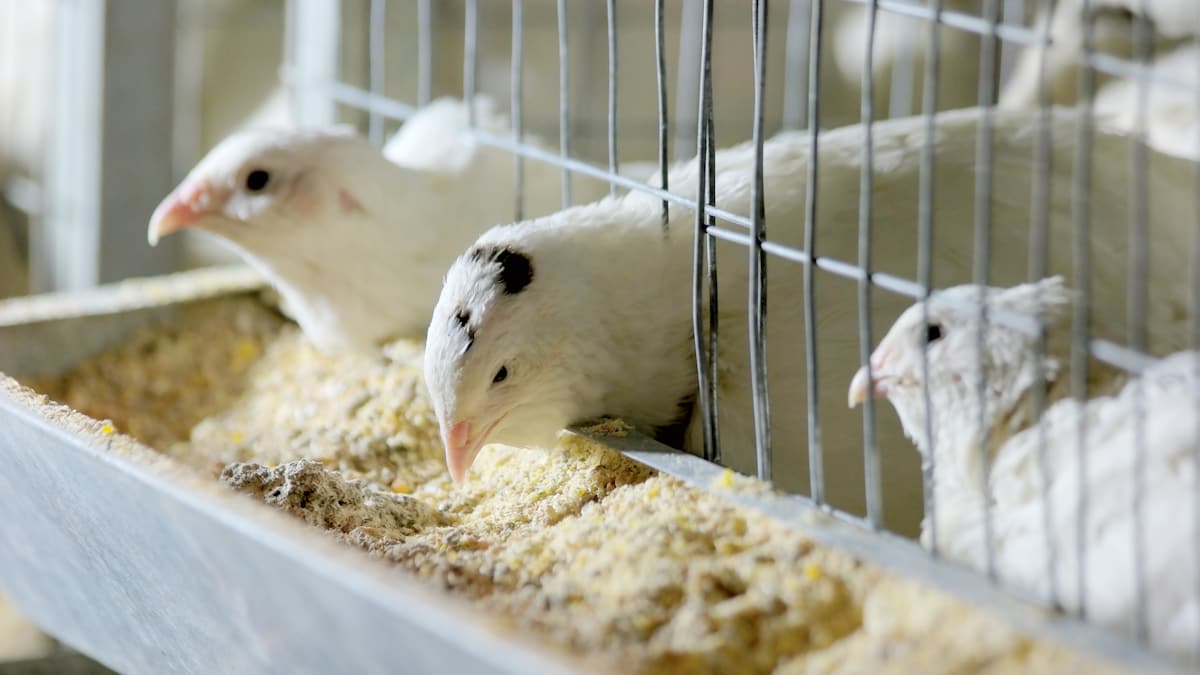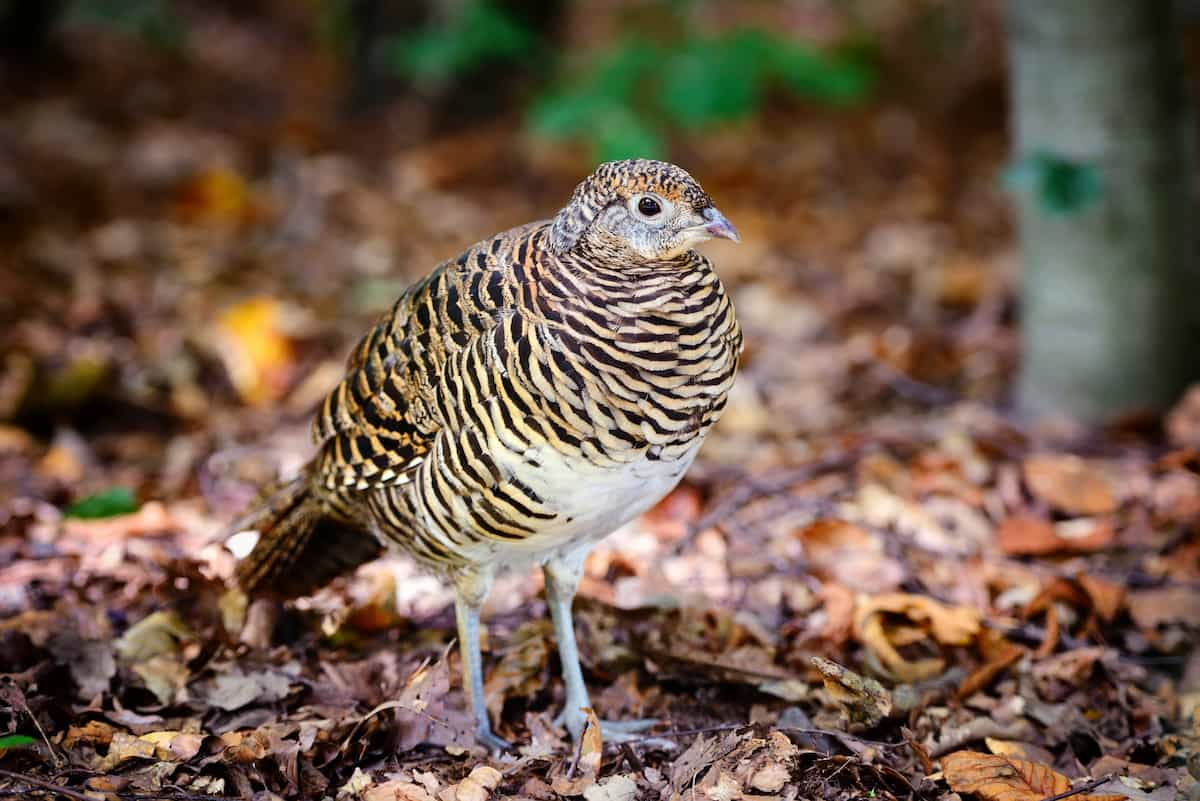The continued rise in the human population in developing countries necessitates the establishment of additional animal protein sources. In this situation, the demand for poultry products has been increasing. There is a great need for the development of the poultry industry to meet the growing demand for poultry products without having to import them from other countries.

Quail not only supplies animal protein in the form of meat and eggs but also provides a source of income. Quail farming as a supplement to chicken and duck farming has the unique advantage of tapping the growing demand for poultry products. The success of Quail farming greatly depends on feeding practices. Below are the feed requirements for Quails.
Feed Management in Quail Farming
Feeding Plan for Quails
Feed baby quails with a “starter” diet soon after hatching. Continue feeding the starter until they reach 6 or 8 weeks of age. In the starter diet, a bird gets the highest level of protein out of every diet it will receive for the rest of its life. As the baby quail age, they require lower levels of most nutrients, including dietary protein but need higher energy.
After the baby quail reach 6 or 8 weeks of age, feed them either a “finisher” diet (meat-type birds) or a “developer” diet (flight birds or those saved for egg production). Feed meat birds with a finisher diet until they reach slaughter size. Feed the flight birds and immature breeders the developer diet until they are sold or about 20 weeks of age. The breeders are fed a “layer” diet a few weeks before expected egg production until they complete their egg production period.
An alternate species of quail bird often produced are the Coturnix or pharaoh quail. They are grown for meat and egg production but seldom for flight or hunting. They mature earlier than bobwhite quail and may begin laying eggs as young as 6 to 8 weeks. Similarly to bobwhite quail, Coturnix grown for meat tend to be fed starter and finisher diets, while the laying/breeder birds are fed starter and breeder diets.
For the bird to achieve the desired result, the correct diet must be provided to them to achieve the desired results. Breeders saved for egg production should be fed developer diets, not finisher diets. A laying bird is fed only a laying diet, and a breeder bird is fed a breeder diet. You will notice that your egg production will decrease, and your eggs will become more thin-shelled if you do not take action.
In case you missed it: Feed Management in Poultry Farming: Feeding Plan, Feed Formula, and Feed Requirements

Diet Formulations for Quails
A number of diets are included below that provide an adequate level of all nutrients for the types of birds cited. You must use all of the ingredients without altering the quantities or substituting any of the ingredients. Diets that deviate from the recommended diet can affect the levels of all nutrients in the body and cause undesired problems. Before making any dietary changes, it is always a good idea to consult a poultry nutritionist or county agent.
| Ingredients | Starter (0-3 weeks) | Grower (4-6 weeks) | Layer (above 6 weeks) |
| Yellow maize | 43.25 | 44.25 | 46.25 |
| Groundnut cake | 20 | 20 | 20 |
| Soybean meal | 22 | 14 | 10 |
| Rice polish | 3 | 10 | 8 |
| Unsalted dried fish | 10 | 10 | 10 |
| Mineral mixture | 1.5 | 1.5 | 1.5 |
| Salt | 0.25 | 0.25 | 0.25 |
| Shell grit | – | – | 4 |
| Total | 100 | 100 | 100 |
“Crumble” feeds are most commonly used to prepare game bird feeds. These small feed aggregates are formed by partially grinding or crumbling “mash” feed pellets. Starting feed crumbles are often too large for newly hatched quail to eat. Obtaining the desired particle size requires additional grinding. A good production does not require crumbles, though they have several desirable characteristics. The dietary formulations shown below produce excellent results when mashed together. There has been a deliberate reduction in the number of ingredients used. In addition to these ingredients, it is possible to use many other ingredients, but ingredient substitutions must be reformulated to adjust for nutritional variations in the feedstuff.
Medicated Feeds for Quails
Several medications are available for treating or preventing diseases in quail bird feeds. In feeds, coccidiostats and antibiotics are the most common medications. As soon as a bird hatches, it is fed a ration that contains a coccidiostat until the week before slaughter. An unmedicated diet ensures that no drug residues remain in the tissues of the birds if fed during the last week. When using any dietary drug, regardless of whether a restriction is needed, it is recommended to feed unmedicated diets before slaughter.
Breeder replacement birds are fed coccidiostats until they are about 16 weeks old. In some feeds, antibiotics are added to improve performance and maintain a healthy bird population. Antibiotics prevent minor diseases and produce faster, more efficient growth when added at low levels (prophylactic). Disease outbreaks are treated with higher (therapeutic) levels given in water or injected into birds. Bacitracin and penicillin are antibiotics approved for quail diets by the government.
As a preventative against ulcerative enteritis (quail disease), penicillin (20-50 grams per ton) or bacitracin (50-200 grams per ton) can be added to game bird diets. The use of higher levels is neither recommended nor permitted. Treatment levels should be administered in the birds’ drinking water. Because sick birds drink water but do not necessarily consume feed, this method works better.
Water Requirements in Quail Farming
Producers often overlook the importance of providing fresh water to flocks. Water is one of the most important animal nutrients, even though most producers don’t consider it a nutrient. Clean water is essential for quail at all times, just like for all farm animals. The water the birds drink must not be too hot or too cold; otherwise, they will not drink. At least once a day, clean the water troughs and replace them with fresh water. Ensure that water and feed troughs are free of droppings, litter, soil, and other contaminants.
In case you missed it: Feed Management in Pig Farming: Feeding Plan, Feed Formula, and Feed Requirements

Feed troughs should be placed in a clean, dry location. You should empty feed troughs at least twice a week (daily if necessary) and refill them with dry, fresh feed. You should not wash feed troughs unless they are excessively contaminated with waste or if the feed gets wet. Make sure the feed does not get moldy. Quail can be killed by moldy feed.
Conclusion
It is good to know that you’re feeding them the right things and giving them a balanced diet when it comes to feeding quails. Feeding quails depends on their age, their upbringing, and, most importantly, how you like to feed them. A vet should be consulted if your quail is still refusing to eat.
- Feed Your Flock for Less: Top 10 Tips to Save on Chicken Feed
- Ultimate Guide to Ossabaw Island Hog: Breeding, Raising, Diet, and Care
- Hatching Answers: The Top 10 Reasons Your Chickens Aren’t Laying Eggs
- Eggs and Economics: Breaking Down the Cost of Raising Backyard Chickens
- Defend Your Greens: Proven Methods to Keep Iguanas Out of Your Garden
- Ultimate Guide to Cinnamon Queen Chicken: A Comprehensive Guide for Beginners
- Ultimate Guide to California Tan Chicken: Breeding, Raising, Diet, Egg-Production and Care
- Ultimate Guide to Marsh Daisy Chicken: Breeding, Raising, Diet, and Care
- 10 Types of Chicken Farming Businesses You Can Start for Profits